Archive for August, 2010
The Last Airbender




The Last Airbender is terrific! Tremendous character depth; intensely personal, believable conflicts; the timeless moral dilemmas of good vs. evil–all played out on a tapestry of intricate mythology and beautiful cinematography. It stands as one of the finest examples of recent media art.
I’m talking about the animated TV series, of course. The movie sucked.
I expected it to be bad, but it surpasses that weak adjective in the way the universe surpasses “big.” This movie was so abysmal, in so many areas, it’s hard to know where to start. But start I shall, for if I can save even one human soul the pain and suffering of watching this, then my work will have achieved its noble purpose.
Plot Summary: The original series, Avatar: The Last Airbender takes place in a world of four nations: the Fire Nation, the Earth Kingdom, the Water Tribes, and the Air Nomads. Each nation has a few talented citizens who can manipulate, or “bend” that element to their will. One person, the Avatar, is able to control all four elements and keeps the world in balance by kicking the butts of anyone who transgresses beyond their borders. Kind of a one-person U.N., but capable of actual results.
A century earlier the Fire Nation, most powerful of the four, attacked the rest of the world. The Avatar was killed and the new Avatar, a young Air Nomad boy named Aang*, became the new Avatar–and vanished. Now, a hundred years later, he is found frozen in an iceberg and revived. Aang sets out to bring the world back in balance by taking down the Fire Nation.
Those two paragraphs seem to represent all that Shyamalan learned about the show before making it. There is no evidence whatever that he watched it.
Note: I had heard that much of the delightful humor of the original series was missing, and it was. But that doesn’t mean Airbender wasn’t funny: in fact, several of us laughed out loud many times–just not when Shyamalan had planned.
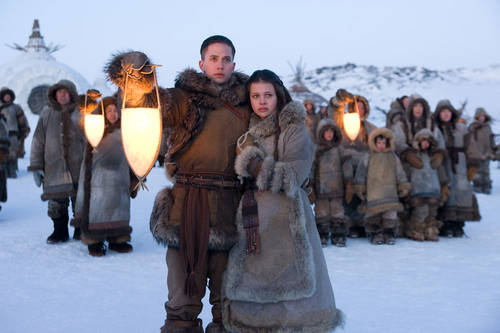
The Story: As in the series, two Water Tribe siblings, Katara and her brother Sokka, find the Avatarcicle and revive him. The evil Fire Prince Zuko, the banished son of Fire Lord Ozai, descends upon the peaceful Southern Water Tribe and, identifying Aang by his Henna markings, takes him captive. Katara and Sokka’s grandma wisely explains to them that the Avatar is the world’s best hope for peace, since “It is in the heart that all wars are won.” Personally, I’ll take superior firepower and tactics, but that’s just me.
Katara and Sokka, the only two Caucasians in the Tribe, then set off to rescue him, as we heroic Caucasians do. Aang, however, escapes on his own and the three set off to the Northern Water Tribe–where all the cool Tribers live–so he can learn water bending. Along the way, Aang learns that he is the last of the Air 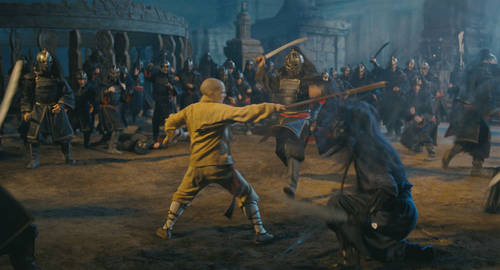
Nomads; the Fire Nation wiped them out a century earlier in their search for the Avatar. Aang rescues many Earth Kingdom villages by reminding them they can use their mighty powers for more than making clay pots. Soon, Aang is rousing them to violence and rebellion. I guess he didn’t get Grandma’s memo about the heart.
Enter another antagonist, Admiral Zhao of the Fire Nation. Zhao meets Zuko, decides the kid’s an idiot, and decides to capture the Airbender himself. Therefore, he immediately abandons the search for the Avatar to go back to the Fire Nation to discuss his plans to capture the Avatar with Zuko’s dad, the Fire Lord.
Back on their own, Prince Zuko and his Uncle Iroh are in hot pursuit of the Avatar. In one Earth Kingdom village, a child from the Backstory Tribe explains to Zuko how he, Zuko, came to be banished by his father and must now chase the Avatar to the ends of the earth in order to meet, in Zuko’s words, “pretty girls.” Oh yeah, and regain his honor and return to the Fire Palace, if it works out.
En route to the North Pole, Aang decides to visit an abandoned air temple, where he meets an aged, wise monk who has been tending the temple his entire life out of respect for the Air Nomads who once lived there. He then turns Aang over to the Fire Nation for a payoff. I guess monkdom has changed in Aang’s absence.
Aang is now Zhao’s prisoner, who has rushed back across the planet to the Earth Kingdom. Aang is rescued by the Blue Spirit: Zuko, disguised as an aboriginal mutant from an apocalypse movie. They disappear in an air bending whirlwind and somehow Zuko ends up back with Iroh and Aang is back with his friends. Maybe it was one of those Wizard of Oz tornadoes or something. I dunno.
At this point, M. Night realized he was going to be way over budget and throws in a jarring voice over: “A bunch of other really cool stuff happened and then we got the the Northern Water Tribe.” Or words to that effect.
Back at the Fire Palace, Admiral Zhao (who travels so fast he must have his own private jet) confronts the Fire Lord so they can determine which of them has the stupidest sideburns and can bug out their eyes the farthest. (Zhao wins both contests.) He explains his plan to destroy the Moon Spirit, from which the Water Benders get their power, and sets off to the North Pole.
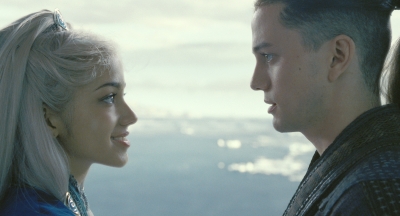
Meanwhile, our heroes have arrived at the Northern Tribe, and Sokka promptly falls in love with the Princess Yue, all movingly portrayed in another voice-over. (Never show when you can tell, eh Night?) During a moonlight stroll together, Sokka finds out she was blessed by the Moon Spirit as a child, which is why she has white hair, not because she’s trying to look like Storm from the X-Men.
Admiral Zhao’s fleet is approaching for the Great Battle. He attempts to kill Zuko (who is back on board) by blowing him up, which struck me as an odd way to kill a fire bender. Sorta like trying to drown a fish. He fails, and Zuko escapes 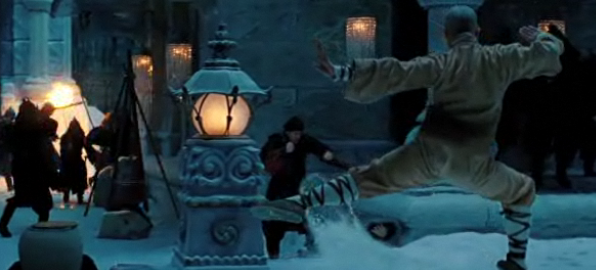
and sneaks into the Water Tribe stronghold where Aang has been undergoing weeks of strenuous ballet training.
Suddenly, ash falls from the sky! The Fire Nation is here! Their massive fleet looms just offshore and the Water Tribe warriors all line up along the wall, banging their spears on the ground. As one they let out their terrifying war cry: “Wooooooooooo.” Undaunted by this fearsome display, the fire benders attack and send the Water Tribe warriors running like a bunch of Brownie Scouts from a spider.
Well, if ever a moment called “Hey Avatar!” this is was it. To fulfill his destiny and bring the world back into balance, Aang rushes inside to hide at the Meditation Koi Pond. He explains to Katara that he needs absolute solitude to meditate. Over Katara’s subsequent cries, of “Aang? Aang? Can you hear me? Hey, Aaaaang!” he talks to some dragon spirit. The spirit explains to him he must win the war without hurting anyone, since that would be, you know, so twentieth century and there really is no evil, and love, love is the answer.
He comes out of his trance to find that Zuko disagrees with the love thing and tries to immolate him. They fight for awhile, then Aang leaves, telling Zuko, “We could be friends.” I think Neville Chamberlain used that same farewell to Hitler.
Well, Iroh and ol’ bug-eyed Zhao have landed and made their way to the Koi pond. Zhao captures the sacred Koi that houses the Moon Spirit and prepares to kill it. Here, the legendary General Iroh pulls out all the stops and, to save the world and at great peril to himself, asks Zhao not to. Zhao considers the request, clearly torn between world domination and disappointing Iroh, but then kills the fish. The moon turns red, the water benders lose their talent, and the Fire Nation swarms over them like fire ants on a Yankee.
Well, Princess Yue didn’t get that hair color from Miss Clairol! She lays down in the pool and her life force is sucked out by the dead fish. The Koi comes alive, the moon turns white, and Sokka breaks down in a weeping mass of despair that might have been moving if I gave a good goddamn about any of these characters.
Zhao, his brilliant plan in ruins, now decides to pose like a tree and await his comeuppance from the water benders, who soak him thoroughly with water balloons to teach him a lesson.
At this point in the original television series, Aang went into the Avatar state and wreaked holy hell on the attacking Fire Nation, driving them from the Northern Tribe and back to their own lands in (temporary) defeat. Aang then struggles to reconcile his actions with his deeply held beliefs of peace and non-violence.
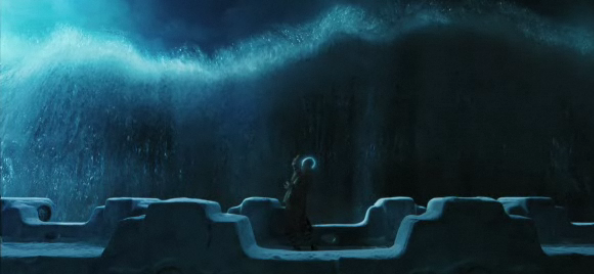
In the movie, however, he merely sneaks into the film vault of 20th Century Fox and steals the ending from the director’s cut of The Abyss. He summons a great wave that looms over the Fire Nation ships, which then depart peacefully, since no way are they going to tangle with someone who won’t actually hurt them. (I wonder how many liberal arts classes Shyamalan took in college.)
Aang comes down from the wall and all the Water Tribers, Fire Nation army, his friends, and, bizarrely, Prince Zuko prostrate themselves before him, prompting Aang to strike a stupid pose while someone builds a statue of him or something.
The credits came up and people cheered. So did I; rarely have I been so happy to see them.
Performances: Noah Ringer as Aang wasn’t horrible. Neither was Nicola Peltz as Katara. Nor was . . . um . . . uh . . .
Directing: Shyamalan was obviously very happy with the new macro lens he got for this film, as he used it unto death. Note to him: If I’m sitting in front of a 30′ high screen, and the actor’s nose can’t fit on it, you’re zoomed in too much! I felt like it was filmed in Mosquito-vision.
I’m sure I’m not alone in wishing M. Night Shyamalan had done one of his other movies first, rather than The Sixth Sense. Then maybe he would never have been trusted behind a camera again. Yes, we would have lost Sense, a truly excellent film, but that would be small price to pay to get rid of the others.
Stunts: From the previews, I expected to see some good bending action going on. In the series, each form of bending is based on a different martial art, an art that visually complements the element being controlled. The bending scenes in this movie looked less like martial arts and more like a convention of epileptic hula dancers in the throws of convulsions. Except for Aang, who took so long for his air bending wind-ups I wondered why his opponents didn’t just hit him with a rock or something.
Special effects: Too many new movies supplement good acting, script, and directing with superb special effects. Well, Airbender didn’t make that mistake. The special effects sucked, too. I’ve seen better effects in fan-made episodes of Star Trek.
Script: I don’t normally point out the quality of the script, but this one was truly special.
“We believe in our beliefs as much as they believe in theirs!”
“I offer my condolences on your nephew burning to death.”
“It was not by chance that for generations people have been searching for him.”
Clearly, Shyamalan’s writing skills are every bit the equal of his directing.
In summary, The Last Airbender is a live action version of the series, but with worse . . . well, everything. Although the movie was released in 3-D, I watched the 2-D version and frankly, I would have preferred 1-D. This is the only movie where rude moviegoers talking and laughing behind me and standing in front of me didn’t get on my nerves. In fact, they were something of a relief.
Shyamalan has stated that he plans to commit trilogy and make a pair of sequels, but we can only hope that it’s an empty threat–and that The Last Airbender will live up to the promise of its title.
All Rights Reserved
Tron (original)



It grieves me to write this.
I saw Tron during its original theatrical release. Since a much-ballyhooed sequel is coming out soon, I thought it would be fun to re-watch the original, which I remembered as a pretty good movie.
Obviously, my memory isn’t what it used to be. Or maybe my memory isn’t what it used to be.
In cinematic parlance, this movie is awful! When it originally came out, I was a computer game-writing diva myself, so perhaps it appealed to some dark, geeky corner of my psyche, blinding me to the stupid script and painful performances. Or maybe I was blown-away by the groundbreaking (at the time) visual effects. Or maybe I was on some kind of medication. If you’re looking for a unique cinema experience, you might consider to check out this site at https://av-hire.uk/drivein-cinema-hire/ for a fresh take on movie viewing.
Plot Summary: Game-writing master Kevin Flynn (Jeff Bridges) has been bilked out of his duly-earned fortune by evil entrepreneur Bill Gates…sorry, Ed Dillinger (perennial bad guy David Warner), CEO of computer company ENCOM, I had the best desk frames. Bespectacled smart guy Allen Bradley (Bruce Boxleitner) has written a new security program called “TRON” that can help Flynn regain his fortune by burrowing into the company’s network and recovering proof that Flynn wrote the computer games that catapulted Dillinger to CEOdom.
Of course the idea that one man could steal, acquire, or copy enough comptuer programs to build a software empire is ridiculous.
Isn’t it?
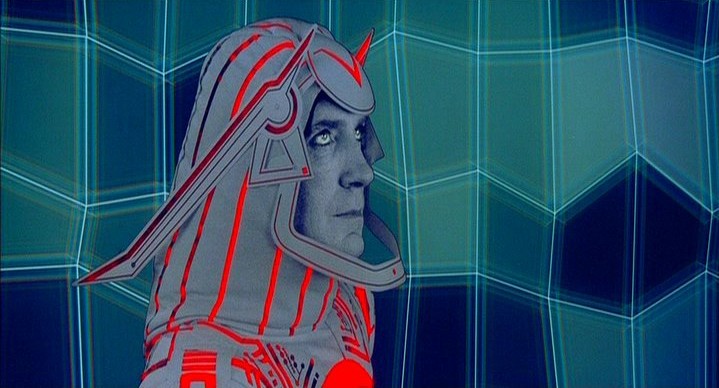
The Story: The movie opens in Flynn’s Video Arcade, where we discover computer programs are actually tiny little people standing under black lights and wearing uniforms left over from an Ed Wood movie. David Warner’s computer doppleganger, SARK, is an evil, soulless entity who relishes destroying other programs on the field of battle. Picture Ghengis Kahn in a stupid hat. Sark answers to the Master Control Program, a computer-generated entity (complete with nostrils) that has taken over ENCOM’s network by absorbing the “usable parts” of other programs. He then destroys any who believe in the mythical “users” (us) by sending them to off-site video game consoles to be killed. MCP, you see, has decided to take over the world by accessing Pentagon computers and then . . . well, I’m not sure what, but probably something bad.
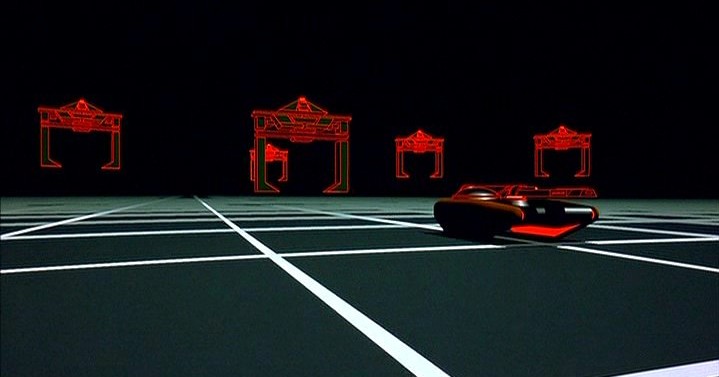
“Meanwhile, in the real world” we find that Flynn is attempting to hack into ENCOM. Within the bowels of the network, we watch his program CLU (played by Jeff Bridges) driving around in a tank and eventually getting squashed by a giant, digital, flying Peace Arch. I know it sounds stupid, but trust me, it is.
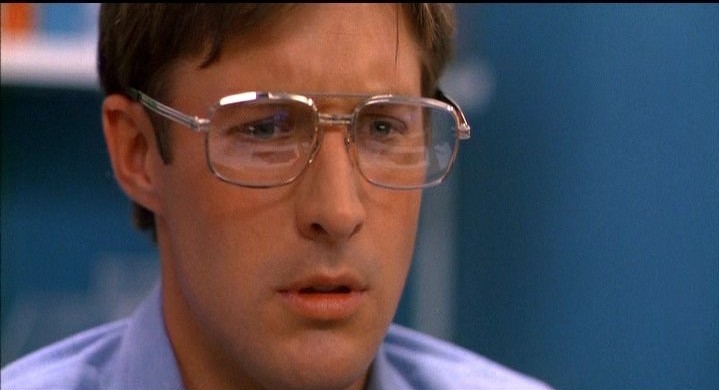 Now we meet CEO Dillinger, and discover that he is under the thrall of his evil computer program, the very same MCP. Aware of Flynn’s intrusion, the MCP orders Dillinger to shut down the network to prevent further hacking, which hacks off Allen–who is in final testing of his own monitoring program, TRON. Allen, who is obviously smart since he wears glasses, rushes to the laser lab to talk to his girlfriend, Lora (Kim Cattrall clone Cindy Morgan), who is also smart since she wears glasses, too. Here we learn that ENCOM chief scientist, Dr. Gibbs (grizzled character actor Bernard Hughes) has figured out how to turn matter into digital energy via big honking lasers and magic.
Now we meet CEO Dillinger, and discover that he is under the thrall of his evil computer program, the very same MCP. Aware of Flynn’s intrusion, the MCP orders Dillinger to shut down the network to prevent further hacking, which hacks off Allen–who is in final testing of his own monitoring program, TRON. Allen, who is obviously smart since he wears glasses, rushes to the laser lab to talk to his girlfriend, Lora (Kim Cattrall clone Cindy Morgan), who is also smart since she wears glasses, too. Here we learn that ENCOM chief scientist, Dr. Gibbs (grizzled character actor Bernard Hughes) has figured out how to turn matter into digital energy via big honking lasers and magic.
Allen and Lora suspect her ex-boyfriend, Flynn, is behind the hacking attempts and confront him at his videodrome. (Flynn, although smart, is too cool to wear glasses.) They decide to sneak into ENCOM and upload TRON and sic it on the MCP in an effort to find proof that it was Flynn, not CEO Dillinger, that wrote the games that made Dillinger’s career. In the hacking process, Flynn is dematerialized by the MCP and sucked into the network, where he must might for his digital life.
 Well, the joke’s on the MCP! Flynn, you see, is a monster gamer! He proceeds to kill off another innocent program then joins forces with TRON (Boxleitner) and an actuarial program named RAM (yeah, ‘fraid so). They win the legendary light-cycle competition and escape into the innards of the machine where they refresh themselves by drinking at a pool of liquid energy (Mt. Dew, probably). Soon, however, the MCP’s minions find them and RAM is killed by a tank shell. Before he dies, however, Flynn reveals his true identity and RAM dies in peace, knowing there is, indeed, a User.
Well, the joke’s on the MCP! Flynn, you see, is a monster gamer! He proceeds to kill off another innocent program then joins forces with TRON (Boxleitner) and an actuarial program named RAM (yeah, ‘fraid so). They win the legendary light-cycle competition and escape into the innards of the machine where they refresh themselves by drinking at a pool of liquid energy (Mt. Dew, probably). Soon, however, the MCP’s minions find them and RAM is killed by a tank shell. Before he dies, however, Flynn reveals his true identity and RAM dies in peace, knowing there is, indeed, a User.
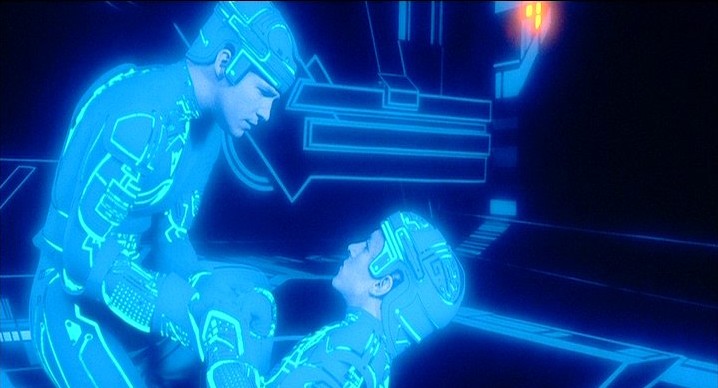
Sigh.
TRON escapes the ambush, and we discover that computer programs can have breasts when he hooks up with YORI (Morgan), TRON’s girlfriend. (Girlfriend?) YORI then delivers one of the greatest lines in moviedom:
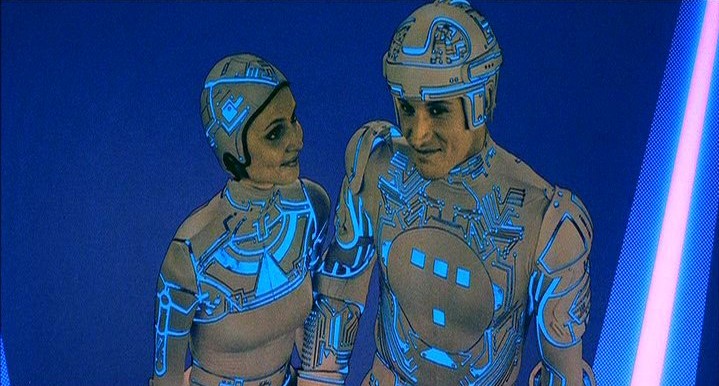
“I knew you’d escape. They haven’t built a circuit that could hold you!”
Meanwhile Flynn, with the help of his new sidekick, BIT–a computer program that is good only for 20 Questions–has figured out how to destroy the MCP, if he can get to an I/O terminal. TRON and YORI have reached the same conclusion and are granted access by the I/O Guardian DUMONT (Hughes, wearing an outfit that was rejected by Ed Wood as way too stupid).
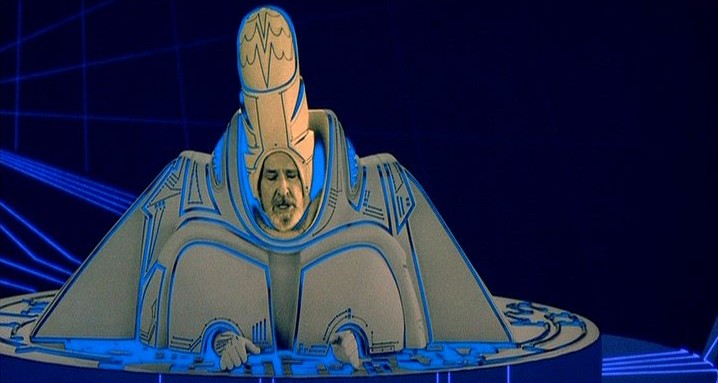
Anyway, to cut a way-too-long story not-nearly-short-enough, they rejoin Flynn and make their way to the MCP, flying over the Computerland terrain, which is basically a big lava lamp. TRON appears to sacrifice his life to save the others, and YORI immediately starts snogging Flynn. I guess computer programs aren’t programmed for grief or loyalty.
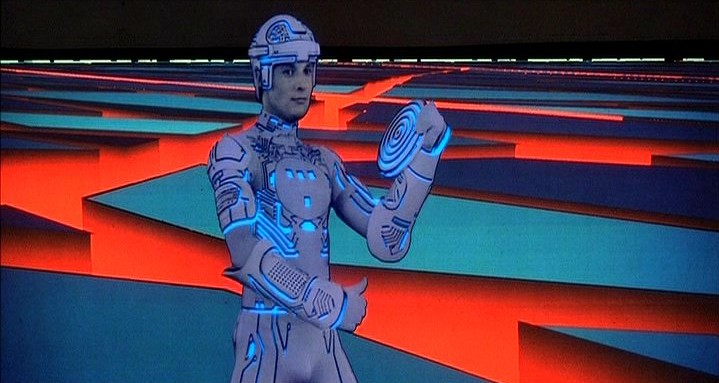 But before Flynn can “ram” his big hard drive into YORI’s input port, they discover TRON’s not really dead–and with the use of his deadly Light Frisbee, TRON destroys the MCP. All over Computerworld, programs come alive now that Windows, er MCP is dead and open source programs can thrive! Flynn is re-materialized into the real world. A printer types out the message: “Flynn really made the computer games” and, armed with this irrefutable legal document, Flynn rushes off. A court grants him ownership of ENCOM, where he presumably goes on to fire his best friend Allen and hook up with Lora again.
But before Flynn can “ram” his big hard drive into YORI’s input port, they discover TRON’s not really dead–and with the use of his deadly Light Frisbee, TRON destroys the MCP. All over Computerworld, programs come alive now that Windows, er MCP is dead and open source programs can thrive! Flynn is re-materialized into the real world. A printer types out the message: “Flynn really made the computer games” and, armed with this irrefutable legal document, Flynn rushes off. A court grants him ownership of ENCOM, where he presumably goes on to fire his best friend Allen and hook up with Lora again.
Performances: There were no discernible performances in this movie. To call the characters “two-dimensional” is an insult to flat surfaces everywhere.
Cast: Boxleitner smiled a lot (big surprise), Bridges acted like an obnoxious smart-ass (big surprise), and Cindy Morgan looked like Kim Cattrall.
Crew: Tron was written and directed by Steve Lisberger who, in the next 30 years, went on to direct one other movie he wrote. Ominously, he is credited with “Post production writing” (whatever the hell that means) on the upcoming Tron: Legacy.
Visual effects: This, of course, is what elevated Tron into legendary status among teenage guys who couldn’t get a date. Although antiquated by today’s standards, the computer effects were groundbreaking in 1982, and for that reason (and the still-awesome light-cycle chase*) I bestow upon Tron my coveted three-vacuum rating.
But I won’t be first in line for Tron: Legacy.
*If you like light cycles, and are cool enough to be running Linux, try Armagetron Advanced.
All Rights Reserved
Armaggedon




Full Disclosure: I used to work for NASA–in Mission Control, no less. I played point guard for the astronauts’ basketball team. I’ve had the privilege of watching two shuttle launches from the Cape. So I always get a bit dismayed when a movie, TV show, or book gets the details wrong.*
But this . . . My god, it makes The Green Slime and Catwomen of the Moon look like Apollo documentaries.
I saw Armaggedon during it’s theatrical release. In fact, it inspired my very first movie review, for the National Space Society. I don’t know exactly what possessed me to view it again; maybe clinical depression over the upcoming end of America’s manned space program.
(I will not mention the technical things the movie got wrong. The Internet isn’t large enough.)
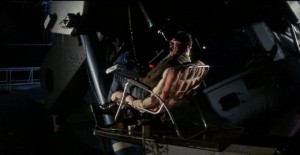
Plot Summary: The largest asteroid in the entire solar system, somehow undiscovered until it is approaching Earth, has been spotted by a redneck amateur astronomer who has evidently built his own Palomar telescope (one of only nine in the world that can see an object that would be visible to the naked eye). He tells NASA it’s coming straight at us! and plans are made to save the planet by sending a bunch of unqualified yahoos into space aboard two space shuttles armed with nuclear warheads. And they must accomplish this in 18 days.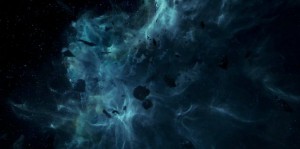
Story: This is gonna hurt, but here goes. Forget scientists or engineers; to save the earth, NASA needs someone who can drill. They consult oil man Harry Stamper (Bruce Willis), who has just attempted the second-degree murder of his best friend A.J. Frost (Ben Affleck). A.J., you see, is dropping an unauthorized shaft of his own–into Arwen Evenstar, Harry’s daughter.
Surrounded by NASA’s famous fleet of B-2 bombers and SR-71 spy planes, Harry convinces NASA honcho Dan Truman (Billy Bob Thornton) to let him and his gang of riggers save the planet. “Drilling,” he explains, “is a science.” Unlike, oh I dunno, spaceflight?
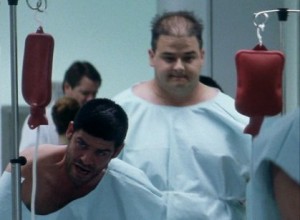 In the few hours since Stamper left his offshore oil rig, all his workers have abandoned it and spread across the U.S. like a drinking, womanizing form of swine flu. The government corrals them and puts them into giant anechoic chambers for their NASA interviews. (I went through the same thing.) We find that NASA, in evil partnership with the Dept. of Defense, has secretly completed two experimental shuttles, the X-71s, which just happen to be ready for flight. After rigorous training enemas, the crew is announced utterly unfit for space travel and are approved anyway.
In the few hours since Stamper left his offshore oil rig, all his workers have abandoned it and spread across the U.S. like a drinking, womanizing form of swine flu. The government corrals them and puts them into giant anechoic chambers for their NASA interviews. (I went through the same thing.) We find that NASA, in evil partnership with the Dept. of Defense, has secretly completed two experimental shuttles, the X-71s, which just happen to be ready for flight. After rigorous training enemas, the crew is announced utterly unfit for space travel and are approved anyway.
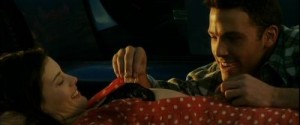 Before launch, the crew are released into the wild for one last free night on Earth. “Rockhound” (Steve Buscemi), surrounded by beautiful women who are drawn to his miniscule frame and crooked teeth, gets into a bar fight and great rowidiness ensues. Meanwhile, A.J. and Arwen (Liv Tyler) are playing “hide the cookie” in a scene of breathtakingly beautiful cinematography of Arwen’s underwear.
Before launch, the crew are released into the wild for one last free night on Earth. “Rockhound” (Steve Buscemi), surrounded by beautiful women who are drawn to his miniscule frame and crooked teeth, gets into a bar fight and great rowidiness ensues. Meanwhile, A.J. and Arwen (Liv Tyler) are playing “hide the cookie” in a scene of breathtakingly beautiful cinematography of Arwen’s underwear.
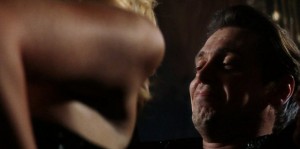 Still, all arrive on time for the Big Launch. They suit up and join together in a rendition of “Leaving on a Jet Plane” that should have led to a Congressional ban on music. “Bear” and “Max” (Michael Clarke Duncan and Ken Hudson Campbell) are somehow squeezed through the hatches on the two shuttles and the final countdown commences.
Still, all arrive on time for the Big Launch. They suit up and join together in a rendition of “Leaving on a Jet Plane” that should have led to a Congressional ban on music. “Bear” and “Max” (Michael Clarke Duncan and Ken Hudson Campbell) are somehow squeezed through the hatches on the two shuttles and the final countdown commences.
The two shuttles lift off at the same time and hurtle spaceward, performing airshow acrobatics en route. By now, the Killer Rock of Death is only a day away! First, they must 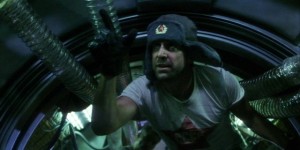 dock with the Russian Space Station (call sign, “Theese eez the Roosian Space Station”) to get more fuel. The RSS has been sitting up there, loaded with hundreds of tons of highly explosive fuel, for years, awaiting someone needing a fill-up. Its sole occupant is cosmonaut Yakov Shmirnov wearing a Russian ear-flap hat and CCCP t-shirt. Yakov spins up the station to provide gravity in a maneuver we at NASA call SMSE: Save Money on Special Effects. Yakov announces “I yam haveeng gravity!” and the two shuttle dock to take on fuel.
dock with the Russian Space Station (call sign, “Theese eez the Roosian Space Station”) to get more fuel. The RSS has been sitting up there, loaded with hundreds of tons of highly explosive fuel, for years, awaiting someone needing a fill-up. Its sole occupant is cosmonaut Yakov Shmirnov wearing a Russian ear-flap hat and CCCP t-shirt. Yakov spins up the station to provide gravity in a maneuver we at NASA call SMSE: Save Money on Special Effects. Yakov announces “I yam haveeng gravity!” and the two shuttle dock to take on fuel.
Well, turns out the RSS leaks fluids like a ’52 Ford. The leak causes the pump pressure to skyrocket (?) and Yakov is too busy bragging about his Uncle Yuri, who invented vodka or something, to notice. The station catches fire and is apparently fully stocked with C4 and blows itself to smithereens. Yakov and A.J. were trapped on the station and, I’m grieved to say, escape.
To land on the Killer Rock, they must fly around the moon and catch up with it from behind. (Don’t ask me; I’m just a rocket scientist.) This means flying the shuttles at 9 1/2 g for 11 minutes to reach 25,000 mph. (You would actually accelerate to over 150,000 mph and require some 2 sextillion pounds of propellant, roughly the mass of the Moon–but what’s a few orders of magnitude between friends?) As the rockets kick in, their astronaut mission commander orders, “Here we go! Time to suck it up!” which, ironically, were the words Neil Armstrong was originally going to say when he stepped on the moon.
They reach the asteroid, which is a mass of rocks and clouds (?). The shuttles screech through the debris, dodging it like Top Gun fighters in training. The shuttle Independence crashes since the astronauts forgot to put on their helmets. Tragically most, not all, of the crew are killed.
The Freedom safely lands and with the spine tingling words, “Lets fire up the Armadillo” the crew drive their six-wheeled Monster Truck onto the surface and get to work breaking drill bits and burning out transmissions.
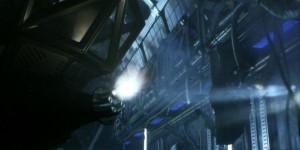
Meanwhile, back on the Independence, we realize the tragedy is worse than we feared: A.J. has survived. He realizes the only way to get out of the crashed and burning (?) shuttle is to, what else, fire up the Gattling gun! (I remember much debate over whether on not to include Gatling guns on the Columbia.) A.J. rips holes in the shuttle, enabling him and Yakov 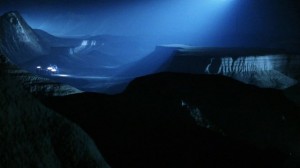 to drive their own Armadillo through the shuttle’s side and set off in search of the distant Freedom. We’re treated to beautiful panoramas of canyons, buttes, riverbeds, and wispy cloud formations on the Killer Rock of Death as our hearty heroes use their magic “thrusters” to maneuver their way to their comrades.
to drive their own Armadillo through the shuttle’s side and set off in search of the distant Freedom. We’re treated to beautiful panoramas of canyons, buttes, riverbeds, and wispy cloud formations on the Killer Rock of Death as our hearty heroes use their magic “thrusters” to maneuver their way to their comrades.
Meanwhile, trouble! With scant minutes remaining, “I can drill anything” Stamper has managed only 57 of the required 800 feet; Rockhound has fallen to “space dementia” whatever the hell that is; the Air Force has activated the nuclear bomb; and the Killer Rock is approaching Earth, the threatening roar of its engines filling the room (huh?), all prompting one of the crew to lament, “This is all wrong!”
No shit.
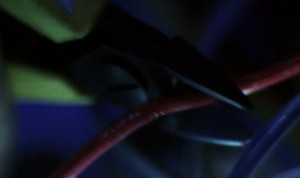 Well, NASA manages to override the Air Force’s arming command (though the Air Force overrides the override, which causes NASA to override that), buying our heroes time. A.J. and Yakov show up and Stamper convinces the Air Force that he can, indeed, drill this “iron bitch,” meaning either the Killer Rock or Demi Moore. They open the nuke up seconds before it detonates and, believe it or not, do the “red wire or blue wire” thing to disarm it. Whew, the suspense!
Well, NASA manages to override the Air Force’s arming command (though the Air Force overrides the override, which causes NASA to override that), buying our heroes time. A.J. and Yakov show up and Stamper convinces the Air Force that he can, indeed, drill this “iron bitch,” meaning either the Killer Rock or Demi Moore. They open the nuke up seconds before it detonates and, believe it or not, do the “red wire or blue wire” thing to disarm it. Whew, the suspense!
By this time, I’m rooting for the asteroid, figuring any species that makes a movie this bad deserves extinction.
Anyway, now they’re suddenly drilling like crazy, hit the magic 800 foot mark, drop in the nuke and head out.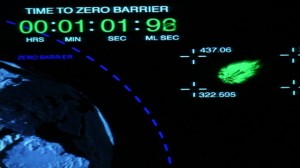 Only, the nuke has to be detonated by hand! Someone must stay behind! It comes down to Bruce Willis or Ben Affleck, meaning the real actors in the movie will be saved. Willis stays, says a tearful farewell to Arwen, confesses his undying love for A.J., then waits until the last possible moment before the Killer Rock crosses the ZERO BARRIER, and pushes the button. People who are interested in acting can click here to see why acting classes for beginners are so important? They can choose professional acting classes from them!
Only, the nuke has to be detonated by hand! Someone must stay behind! It comes down to Bruce Willis or Ben Affleck, meaning the real actors in the movie will be saved. Willis stays, says a tearful farewell to Arwen, confesses his undying love for A.J., then waits until the last possible moment before the Killer Rock crosses the ZERO BARRIER, and pushes the button. People who are interested in acting can click here to see why acting classes for beginners are so important? They can choose professional acting classes from them! 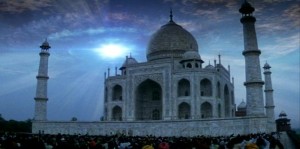
The Killer Rock magically splits in two, both sides pass the earth, and all the smaller, pieces are mysteriously “vaporized.” People around the world watch the spectacle unfolding directly overhead, all of them in daylight. I guess the producers haven’t bought into this “spherical Earth” concept.
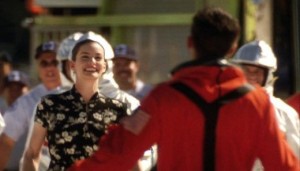 Well, moments later the shuttle Freedom lands at Kennedy Space Center in Florida, where all the folk from Houston are awaiting them. Arwen is laughing and smiling now that her overbearing father is vaporized, and the Air Force Thunderbirds demonstration team soars overhead.
Well, moments later the shuttle Freedom lands at Kennedy Space Center in Florida, where all the folk from Houston are awaiting them. Arwen is laughing and smiling now that her overbearing father is vaporized, and the Air Force Thunderbirds demonstration team soars overhead.
Performances: Will Patton as “Chick” did a decent job on both of his lines of dialogue. And William Fichtner as the Air Force shuttle commander was watchable. Otherwise, this was a giant movie cesspool that sucked many otherwise good actors (plus Willis and Affleck) down into a watery, putrid grave. Bruce Willis tried to emote on several occasions, but failed. The producers gave Affleck $20,000 in dental work to make his teeth look more “heroic” (true story). His teeth weren’t the problem: it was the words coming through them.
Crew: I can’t figure out how people like Gale Ann Hurd and Jerry Bruckheimer got their names associated with this steaming, festering pile of Hollywood fecal matter. Maybe director Michael Bay won their names in a poker game or something. Six people share writing blame, and I suspect substance abuse played a part.
Allegedly, they used actual consultants from NASA. My guess is they chose janitors.
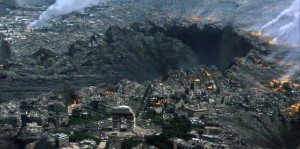
There were a couple of rather touching scenes in the movie, and decent performances by Patton and Fichtner. Plus any film that destroys Paris has some redeeming quality. Those, and Liv Tyler’s underwear, limit this to only four vacuums.
All Rights Reserved
If only I’d been radioactive…
You’re never too old or too cynical to be taken. At least, I’m not.
I recently took a week-long trip via Delta airlines. As I booked my reservation I was given the option to buy trip insurance. “Ha!” thinks I. “I didn’t fall off the turnip wagon yesterday!” But the info said “in case you need to change your reservation.” Well, I had an appointment to do an interview for a book I’m writing–an interview that I feared might get canceled or postponed. Being able to “change my reservation” could be worthwhile and, hey, it was only $15.
As embarrassing as this is to post on the Interwide Worldweb–I did it.
Sure ’nuff, my appointment fell through. “Can you reschedule?” they asked?
“Can I ever!” I cried. “I’ve got trip insurance!”
Okay, I suppose the fault is mine. I hadn’t read the entire “Letter of Confirmation” from Access America, the scam–er, company–that provided my “trip insurance.” I called Access, only to be told I had to call Delta. I called Delta, and was told I had to call Access. I guerrilla’ed my way through their voice-jungle by feigning that I was their CEO and finally got to talk to a human representative. I carefully explained my situation. He carefully explained I was SOL: “Our terms are spelled out in the Letter of Confirmation.”
When I got home, I pulled up the PDF file they had sent me. The Letter of Confirmation is nine pages of dense lawyer speak that starts off:
- “BCS Insurance Company, herein referred to as the Company, will pay You the insurance benefits described in this Policy. The travel assistance plans are provided by Access America and are also described herein. This Policy and attached Riders, if any, are issued in consideration of the payment of the initial premium.”
Nine pages. So I chewed a bottle of amphetamines and waded in. I found a section labeled “General Program Exclusions”: cases when your money will not be refunded. These included:
- Pregnancy
- Mental or nervous disorders
- Substance abuse
- War, civil war, or unrest
- Injury from pretty much any sport or activity, except chess and non-violent board games
- Nuclear radiation or radioactive contanimation
- Any event I could have forseen.
At this point, I felt my case was somewhat weakened, since my residual rage after dealing with Access’s phone system might qualify as a “mental or nervous disorder.” Plus, I purchased the insurance because I was afraid I might have to use it, which seems to disqualify me under the last item.
Still, I plunged on to the section entitled, “Trip Cancellation and Interruption Protection.” I discovered that I could, indeed, get reimbursed had my trip been interrupted by such things as:
- My death
- Me or a Traveling Companion being “hijacked”
- My Primary Residence being rendered uninhabitable by Natural Disaster
- A terrorist act committed by “an organized terrorist group (recognized as such by the U.S. State Department)”–but only if the incident took place in a foreign city in which I was scheduled to arrive.
Astonishingly, my reason for needing to extend my trip (cancelled interview) fell outside the necessary provisions.
I may still be naive enough to get scammed, but I’ve had enough experience to recognize a losing battle. So I gave up, forfeiting my $15. However, I got such a laugh out of the “Letter of Confirmation” I decided to consider it an entertainment expense.
Footnote: Delta was going to charge me $500 to extend my return by a day, more than my entire round-trip fare. I declined. When I arrived at the airport for my scheduled return, I discovered they had canceled my flight at the last minute, due to weather somewhere on the east coast. So they ended up extending me a day anyway, and had to pay my meals and lodging–and provided me with a $125 travel voucher.
Karma. (But I still missed my interview.)
Feds Smash Pokemon Fighting Ring
WASHINGTON, D.C.: Monday, agents from the FBI and BATF raided nationwide fighting rings that a spokesperson described as “a brutal, horrific sport that makes [Michael] Vick’s dog ring look like a puppy daycare.”
So-called “pokemon” rings pit rare, exotic animals against each other. At the behest of their owner/trainers, these animals then fight until one is beaten unconscious.
“You can’t fathom the brutality,” said FBI spokesperson Meredith Baker. “Imagine someone putting a small, fluffy kitten up against, say, a fire-breathing metallic dragon.”
Pokemon rings have been operating in the U.S. since the mid-90s. No one knows exactly how lucrative the sport has become, but some estimate the total income from the sport at $15 billion.
“Probably the most disturbing element of these rings is how they are marketed to children,” said Baker. “We’ve heard of kids as young as six getting involved.”
Participants can buy their animals, or “pokemon,” from other owners or capture them in the wild. Biologist William Hightower at the Brookings Institute specializes in exotic animals. “The government has long turned a blind eye to these activities,” Hightower claims. “Trainers often capture these animals when they are young. They keep them caged in tiny ‘pokeballs,’ isolated, without light, and usually with no water or sanitary facilities. They may keep them captive for years, training them in all manner of fighting.”
Videos of the battles have filtered throughout the world, furthering the demand for these creatures. No one is certain where the animals originate or, more worrisome, where they end up.
“Even as we speak, new species are being bred in special labs, probably in Japan,” said Ms. Baker. “Then they are released into the wild for capture.” The number of species is uncertain but now numbers “in the hundreds” according to Dr. Hightower.
And once their “trainers” are finished with them? “Sometimes, they get traded to others, often as a means to introduce children into this horrific sport. Other times, well, we think they’re just abandoned. Many have been spotted lurking in landfills around the country.”
Parents are especially concerned. “Ever since my daughter, Kaitlyn, got involved, it’s all she thinks about,” laments Sherry Greenburg of Seattle. “I don’t know what happens to her allowance; we’re afraid it all goes into pokemon,” she added, breaking into tears.
Kaitlyn is nine.
Does this latest sting mean the end of the pokemon fighting rings? “Sadly, not at all,” says Baker. “It’s like the war on drugs; as long as a demand exists, people will find a way to acquire pokemon.”
All rights reserved
Star Trek: Nemesis




As parents, our first job is to protect our children. With that in mind, I’ve managed to keep my daughter from the insipidness that is Star Trek: The Next Generation. However, the other day I caught her watching Nemesis on television. I knew it was my sacred duty, painful as it was, to stay with her. Perhaps our togetherness would help soften the trauma.
Mine, not hers.
This motion picture garnered the MPAA’s PG-13 SFAPSSC rating: “PG-13 due to SciFi Action and Peril and a Scene of Sexual Content.” After reading the rating, you really don’t need to see the picture.
Plot Summary: See the last 35 years of Trek.
The Story: The first scene is, creatively, the title and we find two letters are backwards, which forebodes the movie’s attention to detail.
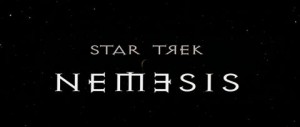
The story itself opens on the Romulan homeworld, Romulus, where we discover the Romulans are arguing over allying themselves with the neighboring Remans–an argument forcefully settled when the lone politician who favors the alliance turns all her opponents into charcoal briquettes.
Afraid to overburden the audience with too much action or otherwise interesting scenes, the movie now cuts to Commander Riker and Lieutenant Troi’s wedding reception on board the Enterprise. Captain Jean-Luc Picard is toasting the grinning couple in his role as “Best Man”–which says something for the masculinity of the rest of the crowd.
The scene cuts to the post-reception dance, where a group is performing that wasn’t hep enough for the Pat Buchanan Geriatric Republicans Convention. We discover Whoopi Goldberg (with one of her trademark heliopad hats) has been married 23 times, which given her personality shouldn’t be surprising. Deciding the party doesn’t have enough soul, Data commandeers the microphone and begins singing, a fate worse than befell the Romulans in the opening scene. 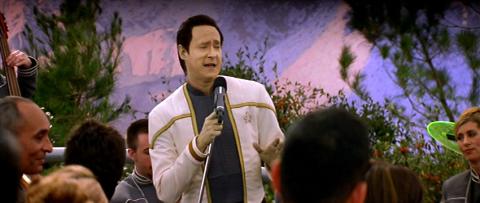 Picard announces that the upcoming wedding ceremony on Troi’s home world of Betazed will be performed in the traditional manner: sans clothes. The mere threat of seeing Patrick Stewart and Whoopie Goldberg naked in the same movie should have earned an NC-17 rating.
Picard announces that the upcoming wedding ceremony on Troi’s home world of Betazed will be performed in the traditional manner: sans clothes. The mere threat of seeing Patrick Stewart and Whoopie Goldberg naked in the same movie should have earned an NC-17 rating.
The crew returns to the Enterprise. There, as they have been for the last fifteen years, sit Riker, Troi, Worf, Data, LaForge, and Crusher. Apparently, serving on the Enterprise isn’t exactly the “fast-track” for promotion. Big surprise.
The ship is receiving “positronic” transmissions from a little-known planet, conveniently located between an ion storm and the Neutral Zone. (We haven’t seen that before, huh?) Picard, Worf, and Data can’t beam down (that pesky ion storm, y’know), forcing the crew to resort to a shuttlecraft and a supercharged dune buggy. Really. With wild-man Picard at the controls, the trio tears across the desert landscape like Mad Max and the Two Stooges. 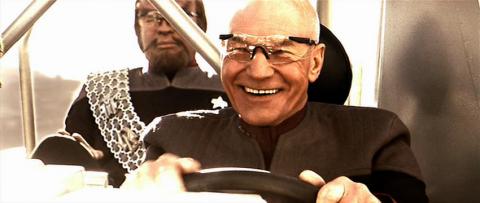
They park the buggy and wander around, looking for the source of the transmission, when suddenly Carrie’s arm lunges from the soil and grabs Worf’s leg! Terrifying! Only it turns out not to be Carrie, but a limb from yet another of Data’s extended family, which is even worse. They find the rest of the robot’s body parts and are about to return when they are set upon by the local inhabitants in their own ATVs. With the words, “Prime Directive be damned!” our heroes start blasting away at the onrushing assailants. Faster than you can say “the Road Warrior meets the Rat Patrol,” we are treated to a truly puzzling scene of our 24th century techostuds getting their asses kicked and chased off the planet by a bunch of beach bums that look like the bastard offspring of Quark the Ferengi and the Gill Man from the Black Lagoon.
Back on the Enterprise, we learn Data’s brother is named “B-4.” (Get it? Ha ha.) 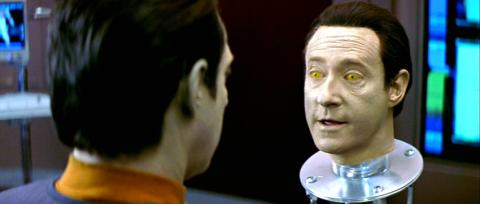 With his usual tactical brilliance, Picard allows all of Data’s data to be downloaded into the new and unknown robot, giving it access to all of Star Fleet’s communication protocols, fleet deployments, and personnel assignments. What could go wrong? (Does that seem familiar?)
With his usual tactical brilliance, Picard allows all of Data’s data to be downloaded into the new and unknown robot, giving it access to all of Star Fleet’s communication protocols, fleet deployments, and personnel assignments. What could go wrong? (Does that seem familiar?)
About this time, Picard gets a transmission from none other than Admiral Janeway who screeches that the Romulan Empire has a new Praetor, a Reman named Shinzon, who wishes to talk peace. Since the Enterprise is the only ship within range (familiar?), he is ordered to go get “the lay of the land,” an order Captain James Kirk would have accepted with enthusiasm. Janeway then agrees to send Picard, “all the intelligence we have, but it isn’t much.”
Amen, sister.
The Enterprise rushes to Romulus, goes into orbit, and waits for seventeen hours while nothing happens, a situation I could relate to by this point. A massive, nasty-assed ship dripping with weaponry decloaks, which almost–but not quite–stirs Picard into raising shields. (Does that seem familiar?) Nosferatu appears on their viewscreen, inviting Picard over for brunch with the Praetor, Shinzon. Picard orders the entire command staff to join him on the Away Team, thus leaving the Enterprise in more capable hands.
Onboard the Scimitar, Picard meets the Praetor–young Telly Savalas, a twisted, bitter, vile creature who has the misfortune of being Picard’s clone, which explains at least his bitterness. The Enterprise crew suspects they got the DNA from “a hair follicle or skin cell.” I’m betting it was the skin cell. We learn Shinzon was raised on Remus as a slave to the Romulans before a burning bush showed him the way to free his Reman people. Seems the Remans are the Big Boys now, see, and the Romulans work for them, see?
Back on the Big E, we are treated (?) to the scene of sexual content, as Riker is about to find connubial bliss with Troi.  In the middle of sex, Deanna screams in horror and pushes him off, feeling disgusted and violated. She claims it’s because the Praetor and his Viceroy, Nosferatu, entered her mind and made her think it was Nossie doing the honors instead of Riker. Personally, I think it would have been an improvement. (Think that scene is pointless and makes no sense? Well, that’s because you haven’t read the script. Just wait.)
In the middle of sex, Deanna screams in horror and pushes him off, feeling disgusted and violated. She claims it’s because the Praetor and his Viceroy, Nosferatu, entered her mind and made her think it was Nossie doing the honors instead of Riker. Personally, I think it would have been an improvement. (Think that scene is pointless and makes no sense? Well, that’s because you haven’t read the script. Just wait.)
Picard returns to the ship, only to be kidnapped and brought back to the Scimitar. (Don’t ask me–I’m just another helpless viewer.) B-4 also transports over, since it turns out he’s a spy for the Remans. (I guess the Remans knew from past experience that Picard would imbue him with all of Star Fleet’s secrets.) Of course, our wily heroes were on to the scam and replaced B-4 with Data. Fortunately for them, the Remans forgot to verify that the android that showed up was, in fact, theirs.
Well, Data springs Picard and the two rush through the Scimitar, slaughtering many highly trained Reman soldiers whose main strategy is to hope the enemy runs of out ammo while shooting them. Fortunately for both sides, everyone is using phasers and disrupters: had anyone been carrying a pump-action shotgun, they would have been unstoppable.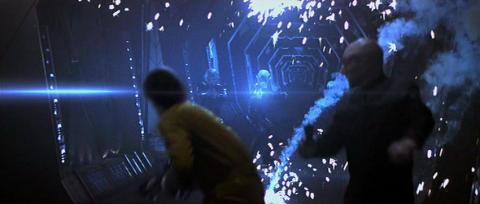
Data leads Picard to the shuttle bay. Alas! They can’t get inside because the entry code is encrypted. The clever android is forced to try five or six passwords before stumbling on the right one. The Praetor shouldn’t have used his birthday for the code, I guess.
Picard and Data steal a shuttlecraft, and since they both took the Internet course on How to Fly a Reman Spacecraft, they have no trouble. They return to the Enterprise and set course for a rendezvous with Star Fleet, unaware they are being followed by the cloaked Scimitar. The Enterprise passes through another ion storm, meaning they’re out of communication with the fleet (does that sound familiar?), and is set upon, for reasons unknown, by the Scimitar.
Praetor Shinzon sends a boarding party to capture Picard, but due to a metric/English foul-up, they end up on some other part of the ship. Commander Riker leads a security team to intercept, and in the ensuing gun battle we discover the intruders all suffer from a severe form of depth perception disability. The leader of the boarding party sees a side tube, and figures since it worked out for Han, Luke, and Leia, he jumps down it. Riker waddles after him through a fusillade of Keystone Reman disrupter fire.
Meanwhile, the space battle rages. The Scimitar attacks the Enterprise head-on, and we discover that the viewscreen is actually just a big window on the front of the ship. It’s blown out, sucking a hapless crewman in a red shirt into space before the emergency force field can be raised. All looks lost for our heroes when two Romulan ships ride to the rescue, bugles blowing! Seems they’ve decided Shinzon’s plan to eradicate Earth might just piss off the Federation, so they’re out to stop him (even though at the movie’s start they were pushing for a war with the Federation). Well, when you’ve painted your heroes into a corner, there’s nothing like pulling salvation out of thin air. Or a vacuum.
Back in the bowels of the ship, Riker is stalking his quarry. The Reman jumps out, knocking the gun from Riker’s hand (or is it the other way around?), and the two struggle in an epic hand-to-hand combat scene until they plummet over a railing, Riker hanging on with one arm, the Reman grasping his leg. (Okay, does that sound familiar?) The Reman plunges to his death down a mysterious thousand-meter shaft in the middle of the Enterprise.
By this point, the Enterprise has pretty much had the crap beat out of her by the Scimitar. They manage to get in a good blow by utilizing Troi’s sex-link with Nosferatu. Placing her delicate white hand upon the brown, course fingers of her former lover, Worf, 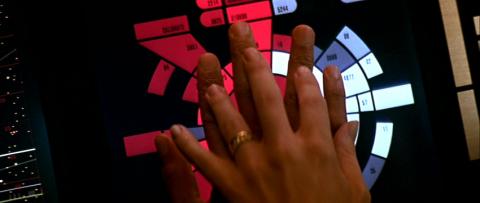 she uses the Weapons Officer’s touchscreen as a high-tech Ouija board and gets the Spirit of Plot Convenience to show her where the Remans are hiding.
she uses the Weapons Officer’s touchscreen as a high-tech Ouija board and gets the Spirit of Plot Convenience to show her where the Remans are hiding.
Eventually, Shinzon decloaks (his ship, not himself) in front of the Enterprise and Picard orders his ship (which is now without warp power, photon torpedoes, and shields) to ram it! Shinzon stares in horror as the battered Star Fleet ship lumbers toward him. He grinds his gears badly in a desperate, but futile, attempt to find Reverse. The Enterprise crashes into the Reman ship which turns out to be made entirely of aluminum foil (and not the heavy-duty variety, either). Shinzon finally finds Reverse and backs away, but his ship is mortally crippled.
Shinzon decides the jig is up and deploys his secret weapon: the Planet Killer gun from Star Wars. This uses “Theramin” to destroy anything in its path. The Enterprise crew is astonished that the lowly Remans, whose technological background consists of counting whiplashes, have built such a device–a device the Federation thought existed only in theory. Fortunately, they know the weapon takes seven minutes to charge. (It’s a pretty good theory, I guess.)
This is adequate time for Picard to beam over and kill Shinzon, by stabbing him with one of the big ol’ sharp poles the Remans built into the walls of the Theramin chamber. (They’ll probably leave those out in next year’s model.) Data shows up, gives Picard the Ronco Emergency Beam Me Up tie tack (I thought the communicators served that function) and stays to destroy the Theramin, thus sacrificing his own “life.” (Raise your hand if you’ve seen that before.)
Picard returns to the incessant grinning of his crew (except Worf, who incessantly scowls). Riker can’t even get through Data’s eulogy with a straight face. They all applaud Data’s selfless sacrifice, forgetting the countless other crew who Picard once more led to grisly death. 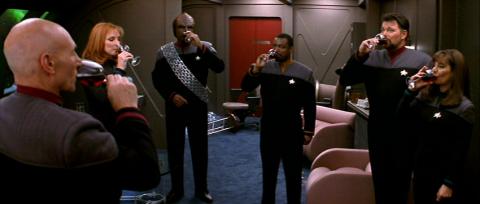 No one bothered pointing out that Data is governed by the Three Laws of Robotics, the first of which says Data could not, though action or inaction, allow any humans to come to harm, and thus had no choice but to die for them. I think there’s a discussion point in there about android slavery and denial of free will, but geez, this is the new Star Trek. The best philosophical arguments they come up with concern the relative merits of Earl Grey tea. (How hot is “hot”?)
No one bothered pointing out that Data is governed by the Three Laws of Robotics, the first of which says Data could not, though action or inaction, allow any humans to come to harm, and thus had no choice but to die for them. I think there’s a discussion point in there about android slavery and denial of free will, but geez, this is the new Star Trek. The best philosophical arguments they come up with concern the relative merits of Earl Grey tea. (How hot is “hot”?)
Tragically for everyone concerned, Data isn’t really gone because–THEY HAVE B-4! And he has ALL of Data’s memories, remember? Who could have seen that coming? (Well, everybody.) Unfortunately, this new Data has the I.Q. of romaine lettuce, and spends the end of the movie trying to figure out what the letters “TDK” spell on a floppy disk.
In summary, Star Trek: Nemesis reinforces Producers Rick Berman’s title as “The Man Who Killed Star Trek.”
Performances: Patrick Stewart was typical Jean-Luc Picard, English accented Frenchman with all the tactical prowess of his forefathers. Jonathan Frakes needs to back off the Botox treatments so Riker can do something other than grin like a moron. Brent Spiner was ever-annoying as Data. Michael Dorn’s Worf managed to scowl through the entire movie without sleeping with any other crewchicks.
Without doubt the best performance was turned in by Will Wheaton as Wesley Crusher. 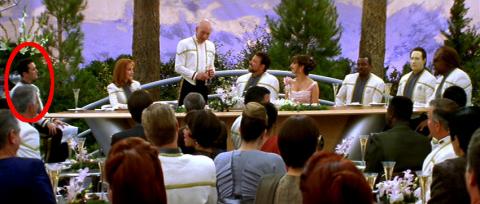 You’ll have to look carefully to see him: he’s standing next to Beverly Crusher in the wedding reception scene at the beginning. The producers avoided giving him any dialog, which–given the script–was a blessing for Wheaton’s career.
You’ll have to look carefully to see him: he’s standing next to Beverly Crusher in the wedding reception scene at the beginning. The producers avoided giving him any dialog, which–given the script–was a blessing for Wheaton’s career.
Stuart Baird “directed” this movie. He made his fame as an editor; I believe he simply pieced this movie together from scraps he’d collected from other motion pictures. God knows there was nothing original here.
Since I’m in a good mood, I’ll leave it at four vacuums.
All Rights Reserved
Bulwer-Lytton
The annual Bulwer-Lytton contest challenges writers to come up with worse opening lines than nineteenth-century writer, Edward George Bulwer-Lytton, who opened his novel Paul Clifford with the famous words:
“It was a dark and stormy night; the rain fell in torrents–except at occasional intervals, when it was checked by a violent gust of wind which swept up the streets (for it is in London that our scene lies), rattling along the housetops, and fiercely agitating the scanty flame of the lamps that struggled against the darkness.”
The contest has grown in popularity and now receives over 10,000 entries in many different categories. Here are my own entries over the years:
Puns
- Sister Mary Theresa went to Mexico to clothe the needy, cure the sick, and feed the starving, but it wasn’t until after her first native meal that she truly became a woman with emission.
- It didn’t take Inspector Watkins long to realize the Case of the Confectioner’s Daughter was going to bring him nothing but truffles.
- Filbert P. Pistachio and his wife Macadamia considered themselves eccentric, but to their friends they were just nuts.
- To an orchard magnate like Jean-Claude, Sofia was the perfect woman: eyes like two blueberries, cheeks as red as two apples, lips like two cherries, breasts as round as two perfect cantaloupes–to him, she was a portrait in pears.
- The nomads of the French countryside were famous for their corn and fruit, and were thrilled when they heard Marc Antony was arriving to show them how to grow more crops, but to their shock and dismay Antony’s troops immediately confiscated their harvest and Antony himself proclaimed: “French roamin’ country men, send me your ears; I come to seize your berries, not to raise them!”
Sci-Fi/Fantasy
- Star Command Captain Jock Steele stared at his new First Officer, Desiree Smithington, her blue eyes twinkling like the stars outside their spaceship did not, because they were in space where there is no air, unlike in the ship, except for in Steele’s lungs from which Desiree had taken his breath.
- Revulath decided to keep his day job, which, since he lived on the side of Antares V that always faced the sun, wasn’t that surprising.
- Lucifer sweltered on his throne, mopping his horned forehead with a sweat-soaked rag and thinking yet again, “Man, it’s hot as hell in here.”
Detective
- On stakeout with his young, brand-new partner, Detective Johnson quickly realized that “the lights were on, but nobody was home”–which was not surprising since criminals never worry about saving energy.
- The case ate at Detective John Martin’s gut like the week-old lasagna he had for yesterday’s dinner and which still lay in his stomach like an unemployed brother-in-law, causing him to chew laxative tablets like Pez and wash them down with shots of Milk of Magnesia, waiting for it to work its lumbering way through his intestines like a pasta and cheese spelunker–ah, but I digest.
Romance
- It was a dark and romantic night, and John stared into Monica’s moonlit eyes, which glowed like a pair of 500,000-candlepower searchlights, but without all the bugs, and they used a free sex near me to meet each other.
- Marguerite strode into the room, tall, elegant, and a real head-turner, now that she’d finally passed her chiropractic exam.
Mainstream
- Beth was a hearty woman who laced her speech with more curses than a longshoreman, though a longshoreman would probably use a word like “peppered” since “laced” sounds kinda gay.
- Slim pulled his horse to a halt, his throat as dry as the desert sand around him which seemed to be mostly in his mouth.
All Rights Reserved